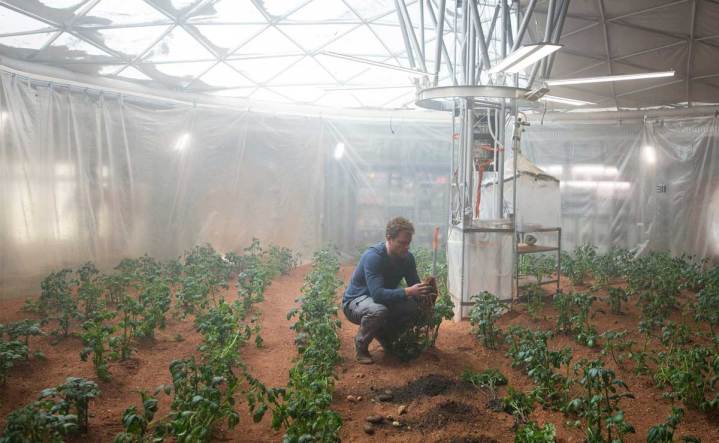
Now, preliminary results from research at the International Potato Center (CIP) suggests that, if an astronaut does find herself stranded on Mars, she’d at least be able to propagate potatoes in Mars-like conditions.
Dubbed Potatoes on Mars, this phase of the initiative has been a yearlong project conducted by CIP, NASA, and the University of Engineering and Technology (UTEC) in Lima, Peru, where scientists have tried to determine the extreme conditions in which tubers can grow.
Planting specially bred tubers in Martian-like soil in a hermetically sealed “CubeSat,” the researchers subjected the crop to conditions similar to those found on the Red Planet, including air pressure and oxygen and carbon dioxide levels. However, the plant wasn’t otherwise forced to suffer — water and fertilized Earth soil provided additional nutrients and structure. Throughout the process, sensors monitored the conditions and cameras live-streamed the growth for impatient botanists.
Eventually, the potato sprouted. The scientists concluded that Mars missions will want to prepare soil with plenty of nutrients and a loose structure to enable the sufficient flow of air and water.
To be sure, as The Martian author, Andy Weir, pointed out to Engadget, scientists already knew potatoes could grow in Mars-like conditions — this experiment just pushed the limits a bit further.
The research shows promise for future astronauts and for people here on Earth, where there is concern that climate change may be threatening smallholder farmers with food scarcity.
“The International Potato Center, through its breeding program, is constantly seeking potatoes with better attributes that will help farmers in the poorer areas, potatoes that produce in extreme conditions of heat, drought and other biotic and abiotic stresses,” CIP potato breeder, Walter Amoros, told Digital Trends.
“Looking at our ‘Potatoes for Mars’ work, the idea is for us to test these genetic materials under extreme soil conditions with high concentrations of salts and oxidizing compounds that impede the development of any plant crop,” he added. “The identification of a potato variety that can tolerate these extreme conditions, will definitely mean that we have found a variety that can be used anywhere on Earth where there are extreme biotic and abiotic stress conditions, and such a variety will make it possible for us to alleviate poverty, improve food security, and adapt more easily to climate change.”
Editors' Recommendations
- ‘Mars isn’t dead.’ There could be active volcanoes on the red planet
- Scientists discover method for making rocket fuel on Mars
- Changes in Mars’ atmosphere are driven by enormous CO2 ice cap at its pole


